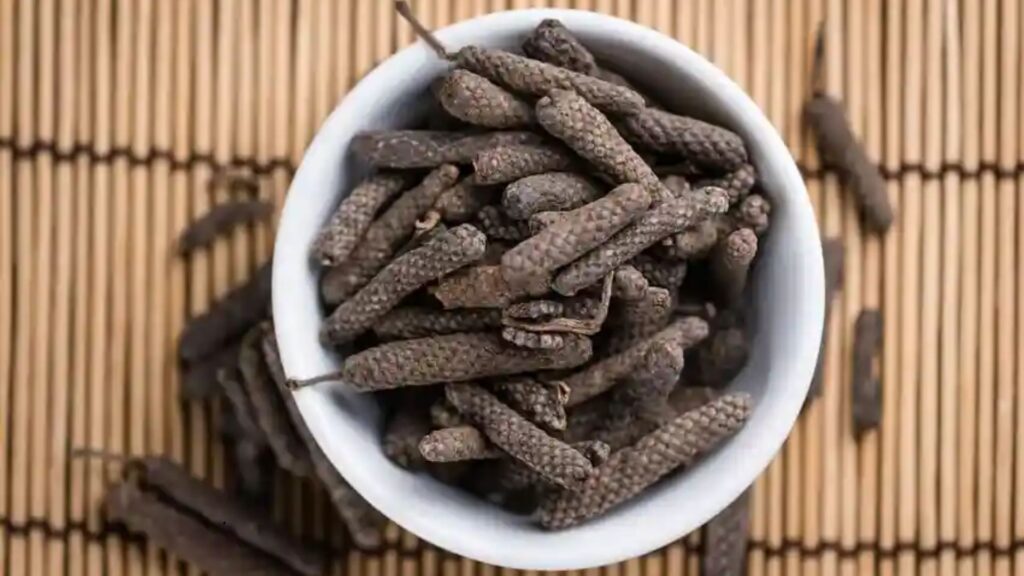Consider Pipli, or Piper longum, as the not-so-popular but equally spicy and medicinal type of black pepper. It has been very silent in the spice boxes of many grannies’ kitchens or hidden in the Ayurvedic shops for all these years; nonetheless, it is really something that deserves our attention.
One of the reasons why the spice of pipli is getting its share today is that it is not a mere spice; it is also a curer. So, go ahead and get a cup of warm water (the addition of a pinch of pipli may be a good idea) and let us take the plunge now.
Why is Everyone Suddenly Talking About Pipli?
In a society that is obsessed with gut wellness, it is becoming popular for the correct reasons. This spice, which is famous for its sharp, pungent taste, has more to give than just that spicy kick in your curry. It is indeed true that piperine, being a bioactive compound, gives it the ability to:
- Enhance appetite
- Facilitate digestion
- Relieve heartburn and stomach pain
- Prevent diarrhea, cholera, and intestinal gas
Research Backs It Up- Modern studies support what Ayurveda has known for centuries. Piperine, the key compound in pipli, stimulates digestive -008,, enhances the bioavailability of nutrients, and even shows anti-inflammatory and antibacterial properties.
So when your dadi said, “Put some pipli in that kadha,”—she wasn’t just being traditional; she was being scientifically correct.
My Personal Experience With Pipli (Yes, It Works!)
A few months back, I was experiencing the discomfort of a suppressed digestive system and consistent bloating—the very common symptoms of a 9-to-5 desk job. A good friend suggested that I take pipli powder mixed with honey before meals. Skeptical but desperate, I gave it a shot.
In under seven days, I was able to detect the change. No more after-lunch heaviness, no more awkward and very gaseous situations at meetings—only smooth digestion. As of now, pipli is such an indispensable part of my daily supplements as well as my masala dabba!
Not Just for Health—Pipli is a Kitchen Rockstar Too!
Did you know that pipli is not just used for remedies? It is also a flavor enhancer in many regional Indian dishes, such as:
- Adding it to curries, pulaos, or marinades.
- By crushing it into chutneys you get that extra zing.
- It is also a basic ingredient in garam masala – the lifeblood of Indian cuisine!
Its structure in long pepper is not the only thing that makes pipli exceptional, but its quite moderate aftertaste is what confers the deliciously complex flavor to the dish without overshadowing it.
Pro Chef Tip: You can apply a small amount of pipli mixed with ghee or oil to take it to the next level, as it contains fat-soluble nutrients that the body uses to make healthy and aromatic vegetarian and non-vegetarian dishes easily. Plus, it is low in calories, making it a great add-on to your diet if you’re into fitness or weight management.
Wait! Are There Any Side Effects?
If you utilize it in sensible dosages, as in preparing food or small therapeutic amounts, then it isn’t harmful to your health. Nevertheless, in the case of the following conditions:
- Being Pregnant or being a lactating mother
- Taking drugs for stomach ulcers or heartburn It is highly advisable to contact your physician without delay. It is better to be not spicy but safe.

Final Thoughts: Don’t Sleep on Pipli!
In a world overloaded with synthetic supplements and chemical syrups, pipli is your mere kitchen warrior—a natural, age-old solution that’s been not only healing but also improving the taste of the gut ever since.
Don’t you think the next time you use a spice in the food, you should check whether pipli has been added? If not, it is the right moment to introduce this magical pepper to your pantry—the thing that changes your life for the better.
One of the tastiest ways to enjoy pipli is in your daily tea! A pinch in herbal tea or kadha boosts digestion and immunity. Curious how tea brings comfort? ☕ Discover why every cup of Tata Tea Premium feels like home.



